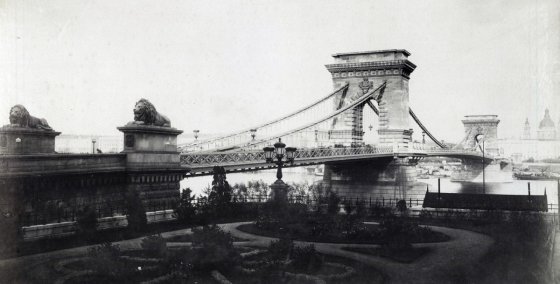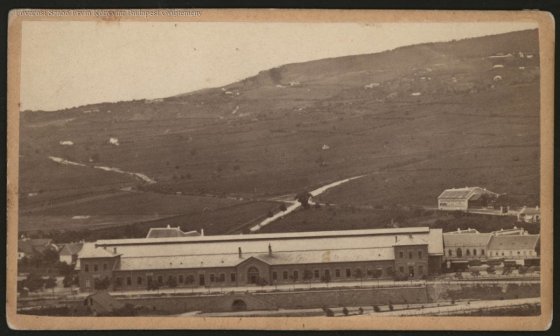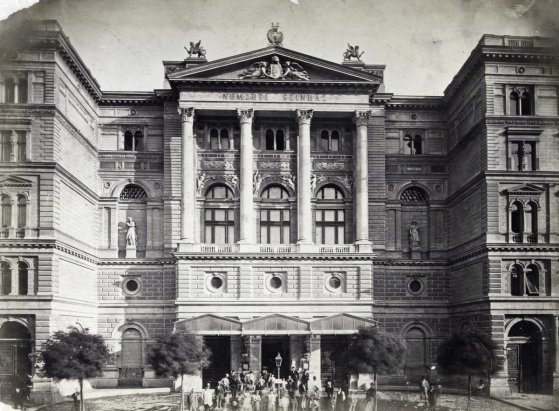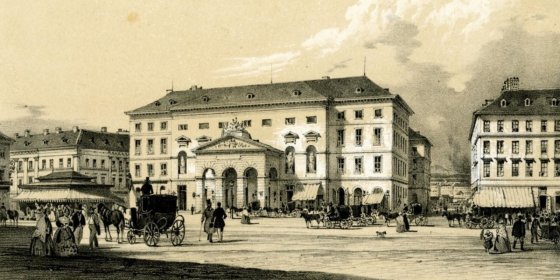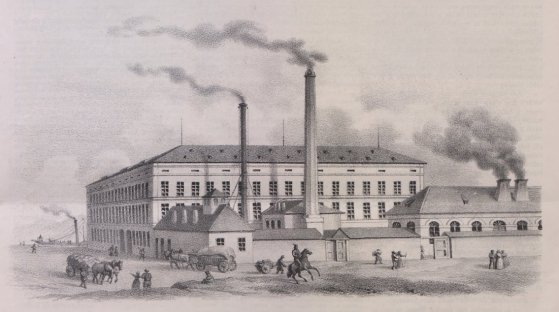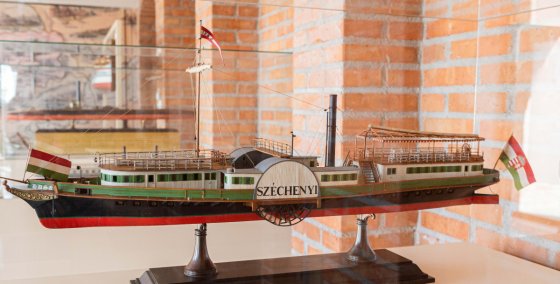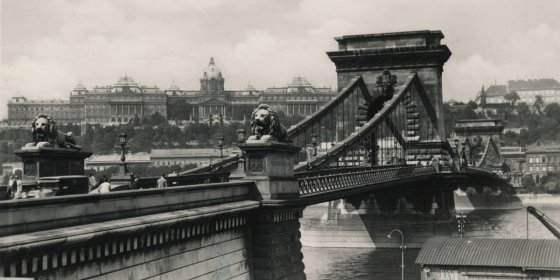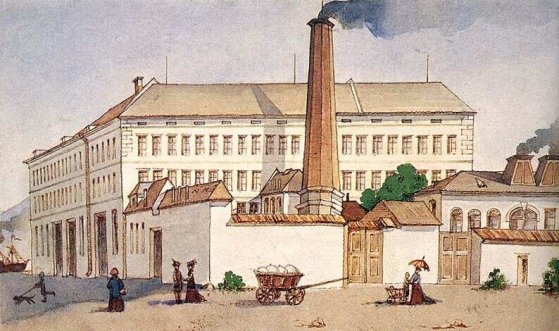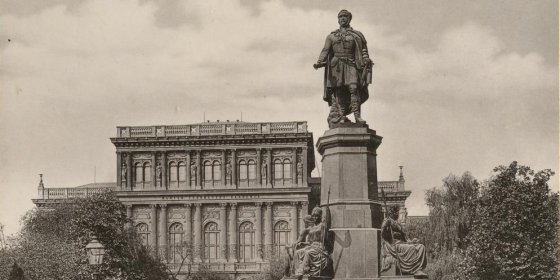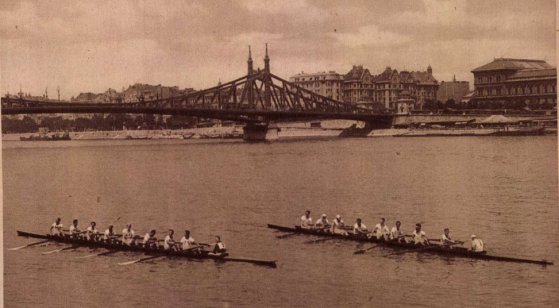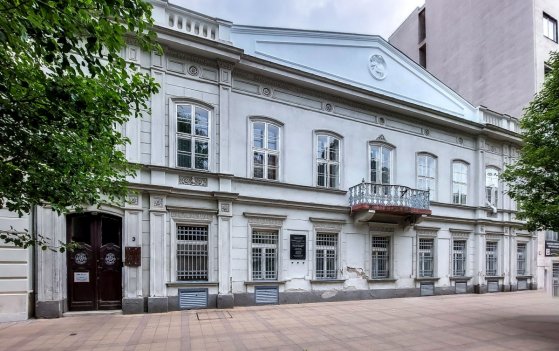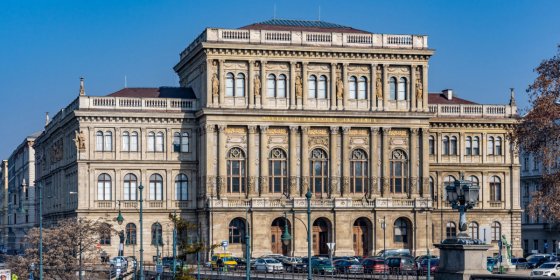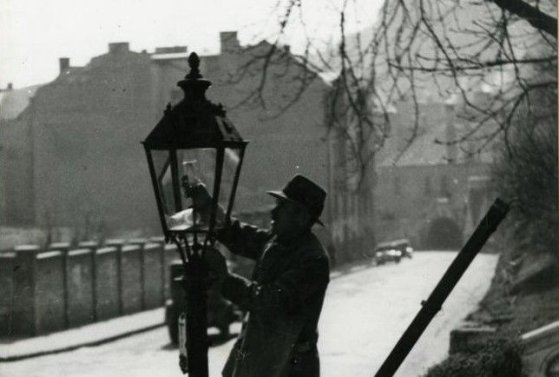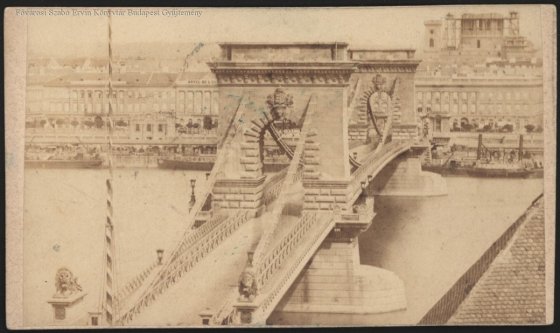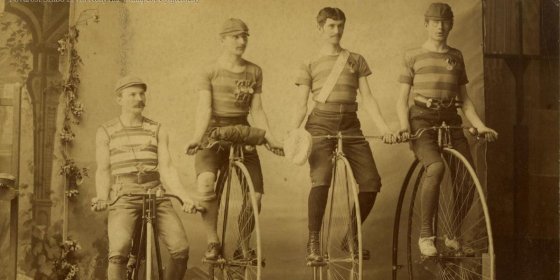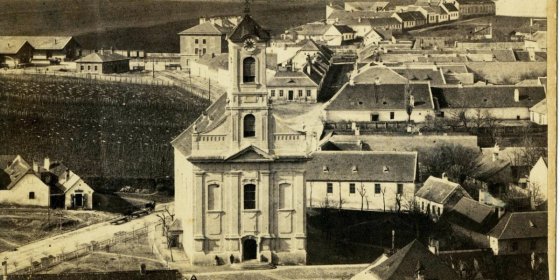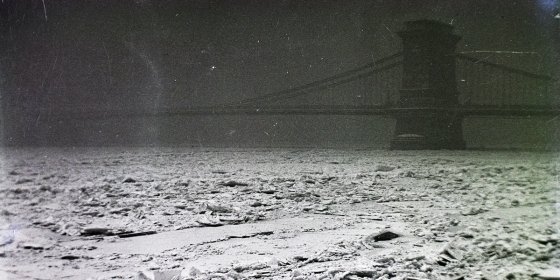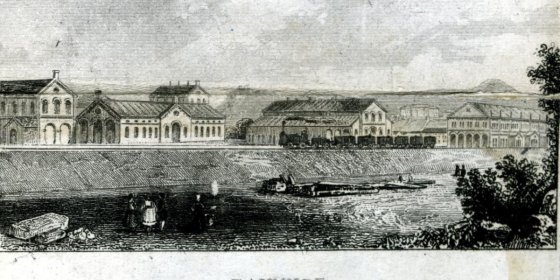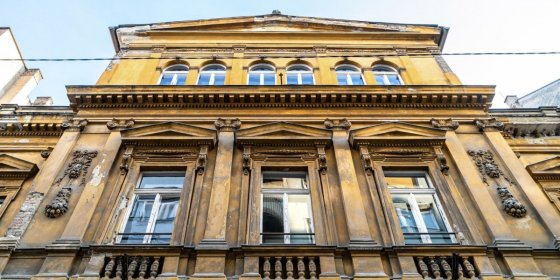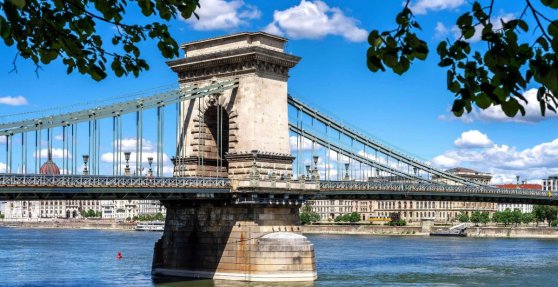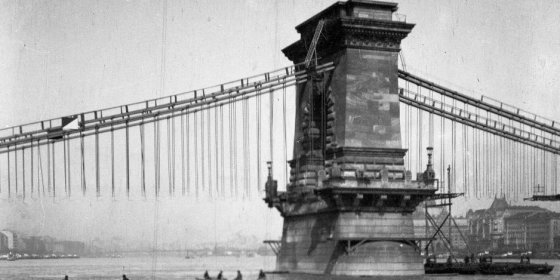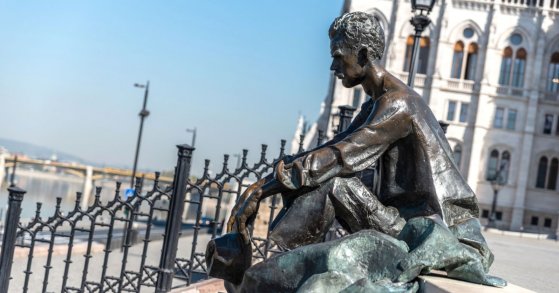 The „intertwined history” of the bridges and the city of Budapest
Which ideas and events have shaped the fate of bridges of Budapest and the cityscape? Alongside many other interesting facts, this question is also answered this newly published book by the Budapest City Archives, which introduces the history of bridges in Budapest.
The „intertwined history” of the bridges and the city of Budapest
Which ideas and events have shaped the fate of bridges of Budapest and the cityscape? Alongside many other interesting facts, this question is also answered this newly published book by the Budapest City Archives, which introduces the history of bridges in Budapest.
István Széchenyi
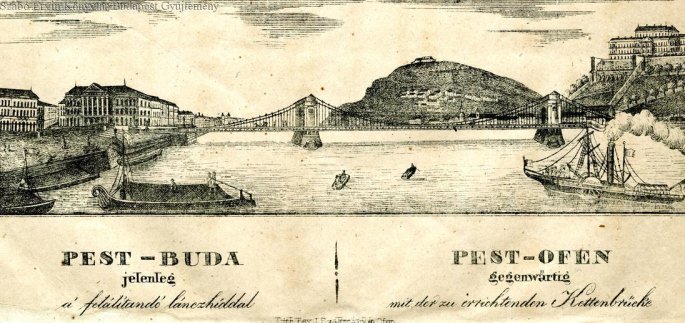 The Bridge Report, which brought a turning point in the history of Budapest
The Bridge Report, which brought a turning point in the history of Budapest
March 31, 2023 at 3:00 PM
A travel report that changed the history of Pest and Buda, as well as Hungary. The little book contributed to the change of half a thousand years of legal customs and the implementation of an investment of unprecedented size and technical quality. This book was The Bridge Report [Hídjelentés in Hungarian].
Merger of Buda, Pest, Óbuda and Margit Island: 150 years ago the city unification law was announced
December 22, 2022 at 12:30 PM
Budapest is one of the most beautifully situated capitals in the world, something Hungarians can be really proud of. It is always nice when a foreigner marvels spectacularly, for example, at the panorama from the Castle. But Hungarians owe these ecstatic expressions not only to the gift of nature but also to the built environment created by our ancestors. Buda and Pest have lived in each other's neighbourhood for centuries, yet their unification provided the impetus that later resulted in so many fantastic buildings on both banks of the Danube. At the end of 1872, after a long history, the parliament passed a law on the merger of the cities, which was approved by the monarch on 22 December 1872 and was announced the next day.
By train to Pest and Buda - Until the Compromise, only private railways operated in the country
July 28, 2022 at 9:00 AM
Today, it is natural to get on the train or plane and get anywhere in the world from Budapest. However, it was quite different a century and a half ago. Let's see where someone could travel from Pest or Buda by train 155 years ago, in the year of the Compromise!
A 190-year-old proposal to create a permanent Hungarian theatre
July 21, 2022 at 1:30 PM
The first permanent Hungarian-language theatre opened in Pest in August 1837, making a nearly 40-year-old dream come true. The construction of the theatre was given a big boost by a work five years earlier, which put a detailed and thorough proposal on the table on how to establish a Hungarian theatre and ensure its operation in the long term. Its creator was István Széchenyi, who already called the Hungarian capital Buda-pest in 1832.
Hebe's Kiosk: the first outdoor ice cream parlour in Pest
July 7, 2022 at 1:00 PM
Budapest has a long tradition of making ice cream. Already during the Turkish rule, eastern vendors made iced drinks from fruit juices, and then northern Italian immigrants started making ice cream-like sweets in Buda and Pest in the 18th century. However, the real triumph of today's ice cream can be linked to the name of confectioner Péter Fischer in Budapest, who opened his famous kiosk on today's Vörösmarty Square 180 years ago.
One of the first Hungarian machine factories operated in Lipótváros
April 21, 2022 at 9:30 AM
One of the first machine factories in Pest practically operated as a subsidiary of the József Rolling Mill, and for economic reasons it became an independent factory, which then became one of the first machine factories in Hungarian industry 175 years ago. Unfortunately, it was not long-lived, but its impact was significant.
From Pest to Constantinople - Exhibition on navigation on the Danube
April 20, 2022 at 2:00 PM
An exhibition can be seen in Gül Baba's tomb, which commemorates one of the largest enterprises of the 19th century, the opening of the Danube to the east. Among the objects we can see the model of the boat, Julietta, the original of which was used by István Széchenyi and his companions when they crossed the Danube in 1830 on a houseboat, Desdemona, which was built for this purpose, assessing the difficulties before sailing.
After the war, the coat of arms of the nobility only remained on the Buda side of the Chain Bridge
March 11, 2022 at 11:00 AM
Two coats of arms were placed on the Chain Bridge 170 years ago, three years after it opened. Family, noble symbols that referred to the two people without whom the first permanent Danube bridge connecting Pest and Buda would not have been built. They were the greatest Hungarian and a wealthy banker, István Széchenyi and György Sina, to whom the general meeting of the Chain Bridge Company wanted to give gratitude this way.
The first steam mill in Pest started significant industrial development - the József Rolling Mill started operating 180 years ago
September 22, 2021 at 9:00 AM
Today it is difficult to imagine, but once the first steam mill in Pest was built and operated in Lipótváros, in the area bordered by today's Bálint Balassi - Béla Stollár - Falk Miksa and Balaton Streets, which started operating on 22 September 1841. However, the József Hengermalom [Rolling Mill] was more than a simple mill. The modern plant established on the initiative of István Széchenyi was not financially successful, but as a result the milling industry and the machine industry also started to develop significantly. Pest in the second half of the 19th century became a major power of the milling industry.
Stations of a Life - The memory of István Széchenyi, born 230 years ago, in the square named after him
September 21, 2021 at 9:00 AM
The year 2021 can also be called the Széchenyi Year, as Hungarians celebrate the 230th anniversary of the count's birth on 21 September. In addition, there is a square in Pest that had been named after the biggest Hungarian for 10 years, and most of its corners are related to a certain stage of the count's life or patriotic deeds. It is the square at the Pest end of the Chain Bridge, which István Széchenyi may have known as Kirakodó Square.
István Széchenyi introduced rowing to the Hungarian capital almost 200 years ago
August 7, 2021 at 10:00 AM
At the Tokyo Olympics, Hungarians once again performed very well in water sports, in keeping with tradition. Rowing became established in Hungary thanks to István Széchenyi, who became acquainted with this sport in England. At the end of the 19th century, competitions were held regularly on the Budapest section of the Danube. Moreover, every year since 1925, university sports clubs have compared their skills on the Danube between Margit Island and the main entrance of the University of Technology, thanks to which countless photographs have survived in which we can see the old pre-war city behind the rowers.
Teleki Blanka opened the first school for girls in Pest in a building on Szabadság Square that still stands today
July 16, 2021 at 9:00 AM
A peculiar twist of fate is that Blanka Teleki opened the first education institution for girls in Pest next to the Újépület ('new building') in Lipótváros, that served as a military barracks, which became her prison in 1851, because according to the imperial authorities the 1848 revolution started from her educational institution. The building, which still stands on the former Promenade, later housed a bank, then the economic police of the Ministry of the Interior, and today the headquarters of the Catholic Camp Bishopric.
The Academy operated in several palaces in Pest before moving into its headquarters
July 7, 2021 at 11:00 AM
Renovation of the headquarters of the Hungarian Academy of Sciences will begin soon. The Neo-Renaissance palace was built between 1862 and 1865, according to the plans of Berlin-based architect Friedrich August Stüler, and execution was controlled by renowned architects such as Miklós Ybl and Antal Szkalnitzky. The company of scientists waited forty years for the independent headquarters. The institution, founded in 1825, rented rooms in the city's famous buildings until the palace next to the Chain Bridge was completed.
The first gas lamp in Pest was lit 205 years ago
June 3, 2021 at 9:00 AM
The aldermen of Pest were given plenty to think about when providing night lighting on the city streets in the 18th century, so in 1715, they forbade staying on the street without a candle or lantern after sunset. Lantern-bearers appeared, carrying candles and oil lamps in front of pedestrians. Oil lamps began to be put out in public spaces at the end of the century, but they only gave little light. The solution was the gas lamp, the first of which was set up in Pest by a scientist, experimenting physician, Lajos Tehel, on 5 June 1816. The lamp was lit up on the facade of the university building on today’s Egyetem Square. Now it is part of the National Museum’s collection.
Neither Pest nor Buda wanted a private company to build the first bridge in Budapest – the bridge law is 185 years old
May 4, 2021 at 9:00 AM
A law promulgated 185 years ago made it possible to build the first permanent Danube bridge connecting Buda and Pest. A long debate preceded the adoption of the bridge law because neither Pest nor Buda supported a private company building the bridge, as they did not want to waive their customs rights.
Széchenyi cycled for the first time on the banks of the Danube - the postal servants rode velocipedes
April 23, 2021 at 9:00 AM
The first velocipedes on the streets of Pest-Buda caused a great sensation in the late 1860s. By the 1880s, the bicycle had conquered Budapest: associations, cycling schools were formed, social trips, parades and competitions were organized. The capital's postal servants rode velocipedes, and the army also used the vehicles. A World Cycling Championship was also held in the capital. In 1928 the Millenáris Velodrome was the most modern and fastest cycling track in Europe.
Cut in half and expanded – The not so everyday history of a Church
February 4, 2021 at 8:30 AM
There is an almost average 18th-century church, the history of which is much more exciting than its simple yellow walls would suggest. It was once cut in two and expanded – and it also served as the venue of a famous wedding 185 years ago. The happy couple were not everyday people. The bride was the widow of Károly Zichy, and the groom was István Széchenyi.
A funeral gave life to the bridge that created Budapest
January 7, 2021 at 9:00 AM
Two hundred years ago, a younger Hungarian hussar officer made a rather reckless statement to a friend. His words had many consequences and changed the lives of many forever. The officer, in fact, was only in a hurry to reach his father's funeral.
A train to the imperial city – Budapest–Vienna train line opened in 1850
December 20, 2020 at 9:00 AM
1850 was a dark year for Hungary. After the war of independence was lost, so was freedom. Haynau's reign of terror through thousands into prison. But in 1850 a dream came true. A rail connection was completed between Pest and Vienna reached.
Sports in 19th century – National Gymnasium turns 150
December 4, 2020 at 3:00 PM
One hundred and fifty years ago, a gymnasium was built in Budapest, a building that still stands on Szentkirályi Street. However, it is not quite like modern sports halls. From the outside, it looks just another palace. Only a small plaque reminds passers-by that it was once built as the National gymnasium in 1870 following the Austro-Hungarian compromise, during Gyula Andrássy's term as Prime Minister. This is what a gymnasium was like at the time: it looked like a palace and housed not only three halls and dressing rooms, but space for the community to live its life. While the rooms are now used for university education, the sports halls still serve their original function.
A bridge without a name – How Chainbridge in Budapest had no name
October 7, 2020 at 11:00 AM
Chain Bridge in Budapest had no official name until 1915 and is still known simply as Chain Bridge in everyday use. However, Lajos Kossuth proposed in 1842 at the laying of its foundation stone that the bridge be named after his great political rival, István Széchenyi, the aristocrat who initiated the construction. Others hoped to name the first permanent crossing between Buda and Pest after princes and princesses. Still, the Ministry of Finance that owned the bridge accepted none of these recommendations. Finally, Széchenyi's name was carved into the structure in 1915, when it was fully rebuilt during the First World War.
The Chain Bridge, a symbol of the country completely demolished in 1914
July 27, 2020 at 12:00 PM
During the renovation of the Chain Bridge, it will be necessary to go back to the plans of 1914. But why will they follow the 1914 version when the bridge was built between 1839-1849?
Poetry Day Walk - Statues of the greatest Hungarian poets in Budapest
April 11, 2020 at 10:00 PM
On this year's National Poetry Day, 11 April - the birthday of Attila József - the public, community poem readings, which have already become a tradition, were cancelled, and we could not even visit the statues of the greatest Hungarian poets to show our respect and gratitude. Thus, Pestbuda offers only a virtual walk between the works depicting our national greats in Budapest.
More articles
 The „intertwined history” of the bridges and the city of Budapest
Which ideas and events have shaped the fate of bridges of Budapest and the cityscape? Alongside many other interesting facts, this question is also answered this newly published book by the Budapest City Archives, which introduces the history of bridges in Budapest.
The „intertwined history” of the bridges and the city of Budapest
Which ideas and events have shaped the fate of bridges of Budapest and the cityscape? Alongside many other interesting facts, this question is also answered this newly published book by the Budapest City Archives, which introduces the history of bridges in Budapest.
 Drama on the university wall - The heroic monument was planned 95 years ago
In the constant hustle and bustle of the Egyetem Square in Pest, the students may not even notice the monument that decorates the short section of wall between the church and the central building of ELTE. However, it commemorates their predecessors, the heroes who fought for their country in World War I, and those who heroically helped them. The first design of the dramatically collapsing soldier was born in 1928, ninety-five years ago.
Drama on the university wall - The heroic monument was planned 95 years ago
In the constant hustle and bustle of the Egyetem Square in Pest, the students may not even notice the monument that decorates the short section of wall between the church and the central building of ELTE. However, it commemorates their predecessors, the heroes who fought for their country in World War I, and those who heroically helped them. The first design of the dramatically collapsing soldier was born in 1928, ninety-five years ago.
 A message from the former school: An exhibition in memory of János Neumann was opened at the Fasori Secondary School
An exhibition was opened in János Neumann's former school, the Fasori Lutheran Secondary School, on the occasion of the 120th anniversary of the world-famous mathematician's birth. In the exhibition presenting the former Neumann milieu, paintings, graphics, photos, furniture, and objects tell the story of the art-supporting spirit of the noble bourgeois family at the turn of the century.
A message from the former school: An exhibition in memory of János Neumann was opened at the Fasori Secondary School
An exhibition was opened in János Neumann's former school, the Fasori Lutheran Secondary School, on the occasion of the 120th anniversary of the world-famous mathematician's birth. In the exhibition presenting the former Neumann milieu, paintings, graphics, photos, furniture, and objects tell the story of the art-supporting spirit of the noble bourgeois family at the turn of the century.

